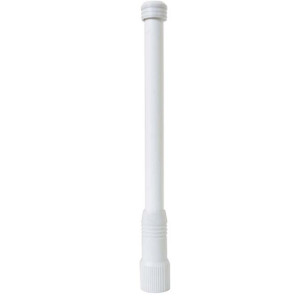Your shopping cart is empty!
MENU

Long-range wireless communication is becoming increasingly popular in modern networking. Devices need to communicate in all environments and at greater and greater distances. As network engineers pursue better ways to build these networks, LPWAN technology is becoming the choice for a variety of IoT applications.
LPWAN solves many wide-area networking problems, and the right antenna stabilizes a wireless network despite the challenges. With LoraWAN options in the mix, network engineers have the tools they need to build expansive networks that connect large numbers of devices with minimal power investments.
A low-powered, wide-area network (LPWAN) offers small data transmissions across long distances at low power.
LPWAN is common in many Internet of Things (IoT) applications where small sensors monitoring anything from gas meters to refrigerator temperatures transmit their data to the cloud.
When designing such networks, engineers require equipment that operates on batteries or solar power and needs minimal maintenance over long periods. In addition, many installation sites are remote or hard to reach, so the hardware must be durable and largely self-sufficient.
LoRaWAN falls under the category of LPWAN and provides a modern approach to solving long-range communication problems. In particular, LoRaWAN protocols provide a stable signal for communications over great distances while adhering to the principles of LPWAN.
LoRa provides a few notable advantages. First, it runs on unlicensed spectra, including the 915 MHz and 868 MHz bands popular in the U.S. and EU, respectively. Additionally, LoRa is excellent for indoor penetration and offers exceptionally high network capacities.
LoRa Antennas like the Mobile Mark HD3-915 provide network engineers with a resource that connects devices on a LoRaWAN network. It stands up well in outdoor environments and produces a clear signal with minimal power draw. It’s a perfect example of LoRa technology improving on LPWAN concepts.
Regardless of the protocol used to connect an LPWAN, antennas have to live up to expectations. With rugged directional antennas, network designers have more options to empower their designs with stability and range. Good use of directional antennas also lowers the total power demand of a wide-area network.
The Mobile Mark Y33810 is a great example. This Yagi antenna draws a maximum of 300 Watts while providing 12.2 dBd of gain. It operates from 806 to 960 MHz and provides everything you need for long-range wireless communication. It is also rated against 125 MPH winds and backed by a 2-year warranty.
If you are going to build an effective network, you need the right tools for any purpose. That is why you should contact Westward Sales today. We staff networking experts who will talk with you about your network and its purpose. Our recommendations draw from expertise and industry experience, allowing us to save you time when looking for specific hardware for your network. We can help you save money with more efficient equipment, and we will point you in the direction of the best tools for every aspect of your network.
There are no products to list in this category.